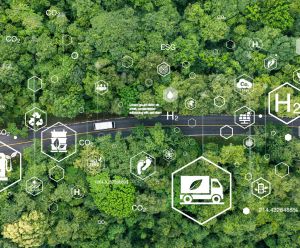
Overcoming the challenges of sustainable logistics

Logistics is a cornerstone of the modern economy, moving goods that countries, companies, and communities need. But the International Energy Agency estimates that the transportation and logistics sectors contribute about a third of global greenhouse gas, making it the largest contributor to emissions in developed nations.
That makes it a key focus for policymakers as the world attempts to shift to net-zero world. To reduce the impact of logistics on the environment, many companies are turning towards sustainable logistics to reduce their carbon footprint. DHL, for instance, is committed to reducing its logistics-related emissions to net zero by the year 2050.
But for smaller enterprises struggling to roll out sustainable logistics programs, here is how they can start.
Funding sustainability
One of the biggest hindrances to implementing sustainable logistics is the high costs that come with it. Companies may need to invest in new sustainable technology to replace existing systems, and train personnel to operate such novel equipment.
Similarly, firms that use packaging in their pipelines will also struggle with obtaining sustainable solutions, which often cost more than conventional plastic and paper packaging.
Such financial woes are especially pertinent for smaller companies lacking economies of scale to afford a sustainable logistics shift.
The good news is that there are sustainable financing sources to help companies transition to more sustainable modes of operation. Many such solutions offer competitive interest rates and have sustainability-linked targets as conditions.
According to S&P Global, green, social, sustainable, and sustainability-linked bonds were expected to hit US$1 trillion in 2023, more than triple the value just four years ago in 2019.
Smaller companies are also expected to get a big piece of the pie. In Singapore, the Overseas-Chinese Banking Corporation (OCBC), for example, handed out over S$7 billion in sustainable financing to small- and medium-sized enterprises in Asia in 2023. This figure is more than double that of 2022, demonstrating a clear willingness and commitment from banks to help firms work towards sustainability.
Shared sustainability goals
Besides getting sustainability financing, companies can also consider collaborating with other businesses with similar sustainability goals. These multi-party partnerships are built on the foundation of addressing not just an environmental issue, but also motivating others to join the movement.
More importantly, these partnerships can help to track and provide full traceability of the sustainability efforts. Sustainable aviation fuel (SAF) maker, Neste, together with DHL Group and ISCC, partnered up recently to develop and test a framework for airlines, logistics service providers and end customers to report the emission reduction achieved by using SAF in air travel and transport.
The system is designed to align closely with the requirements of the Science Based Targets initiative’s (SBTi) aviation guidance for SAF use in addressing organizations’ value chain (Scope 3) emissions.
Partnerships such as the abovementioned help businesses be clearer on their sustainability goals and results, which are challenges they must constantly address.
Overcoming rigid supply chains with technology, data
Sustainable logistics, however, also involves improving processes to boost efficiencies for the long-term success of the transition.
To this end, technology matters. For instance, data analytics tools can be used to thoroughly analyze your supply chain to help identify inefficient and error-prone processes. Data can also help preempt potential issues before they emerge, such as inclement weather or even traffic jams that form choke points in the supply chain process.
Similarly, automation can also help simplify processes and achieve greater efficiency at lower costs. Self-driving vehicles, assisting in last-mile delivery, are eco-friendly and effective. Hermes, for instance, uses robots to deliver packages to customers’ homes in London. This solution also reduces the costs of hiring delivery drivers and purchasing and maintaining delivery vehicles.
Sustainable logistics will only grow in importance as the world battles climate change. And while it may be difficult to make the transition in the initial stages, getting on board now will pay off in the long run.
ALSO WORTH READING














 English
English